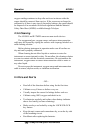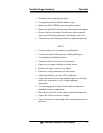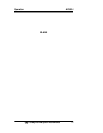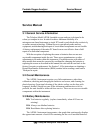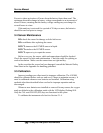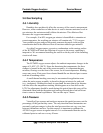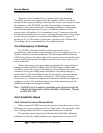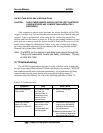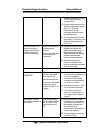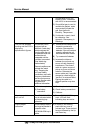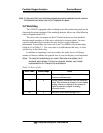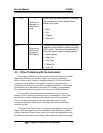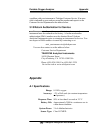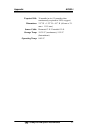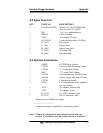
Service Manual AX300-I
Teledyne Analytical Instruments 36
3.6.5.2 CARE AFTER USE IN NITROUS OXIDE
CAUTION: THE R17MED SENSOR SHOULD NOT BE LEFT IN NITROUS
OXIDE MIXTURES ANY LONGER THAN ABSOLUTELY
NECESSARY.
After exposure to nitrous oxide mixtures, the sensor should be left in 100%
oxygen overnight (e.g., left in a breathing circuit that has been flushed with pure
oxygen). If this is not practical, when using the tee, remove the plastic flow
diverter and leave the sensor in room air. If the oxygen reading continues to drop
after each use in nitrous oxide the sensor should be removed from service. If the
sensor can no longer be calibrated or if there is any sign of electrolyte leakage,
the sensor should be disposed of in accordance with local regulations and the
Material Safety Data Sheet (MSDS).
Note: The MSDS on this material is available upon request through the
Teledyne Environmental, Health and Safety Coordinator. Contact
at (626) 934-1592
3.7 Troubleshooting
The AX300-I oxygen analyzer provides a variety of built-in safety features that
prevent its use when a fault is detected. When a unit displays the message √ SENSOR
and sounds the audible and visual alarm continuously, it is an indication of a faulty
connection between the sensor and the unit or an expired or faulty sensor. To
determine where the difficulty lies, refer to the following guidelines in Table 3-2.
Table 3-2 Troubleshooting
Symptom Why What To Do
New sensor responds
slow or drifts.
If the sensor is new
and was just
removed from its
sealed bag it may
need to run for
several hours.
A) Wait 1–2 hours and
recalibrate.
Sensor will not read
below 22 % after
calibration in 100% O2.
Calibration in 100%
was invalid or the
room air is
contaminated with
excess oxygen.
A) Recalibrate using dry gas
making sure the reading
stabilizes before making
any adjustments.
B) Make sure that at least 6" (30
cm.) of tubing is attached to
the exhaust side of the tee



